What Is the Difference Between Ischemic and Hemorrhagic Stroke?
A stroke occurs when blood flow to part of the brain is suddenly interrupted, causing brain cells to begin dying within minutes. It is a life-threatening emergency that requires immediate medical attention. There are two main types of stroke — ischemic stroke and hemorrhagic stroke — which differ in both cause and treatment but share similar symptoms.
What Is an Ischemic Stroke?
Ischemic stroke (also called cerebral infarction) is the most common type, accounting for around 85% of all strokes. It occurs when a blood clot blocks a blood vessel in the brain, cutting off oxygen and nutrients to brain tissue.
The clot may form directly in the brain (thrombosis) or travel there from another part of the body, often the heart (embolism).
Common causes of ischemic stroke:
-
Atrial fibrillation
-
High blood pressure
-
Atherosclerosis (hardening of the arteries)
-
High cholesterol
-
Smoking
Typical symptoms:
-
Sudden weakness or numbness in the face, arm, or leg (often on one side)
-
Slurred speech or difficulty understanding others
-
Vision loss or blurred vision
-
Dizziness or loss of coordination
Treatment:
The goal is to restore blood flow as quickly as possible using thrombolysis (clot-dissolving medication) or mechanical thrombectomy (clot removal via catheter).
Treatment must begin within a few hours for the best chance of recovery and minimal brain damage.
What Is a Hemorrhagic Stroke?
Hemorrhagic stroke occurs when a blood vessel in the brain ruptures and blood leaks into surrounding tissue, causing damage and increased pressure within the skull.
There are two main types of hemorrhagic stroke:
-
Intracerebral hemorrhage: Bleeding within the brain tissue.
-
Subarachnoid hemorrhage: Bleeding between the brain and the thin membranes covering it.
Common causes of hemorrhagic stroke:
-
High blood pressure
-
Aneurysm or blood vessel malformation
-
Blood-thinning medication
-
Head trauma
Typical symptoms:
-
Sudden and severe headache (“the worst headache of your life”)
-
Nausea or vomiting
-
Weakness or paralysis
-
Loss of consciousness or confusion
Treatment:
Treatment focuses on controlling bleeding, reducing pressure in the brain, and stabilizing the patient. In some cases, surgery is needed to remove pooled blood or repair the damaged vessel.
How Do the Two Types Differ?
| Type of Stroke | Cause | Common in | Treatment | Percentage of All Strokes |
|---|---|---|---|---|
| Ischemic stroke | Blood clot blocks blood flow to the brain | People with heart disease, high blood pressure, or atrial fibrillation | Thrombolysis or mechanical thrombectomy | ~85% |
| Hemorrhagic stroke | Blood vessel ruptures, causing bleeding in the brain | People with high blood pressure or aneurysm | Pressure control or surgery | ~15% |
Although both types cause similar symptoms, only medical imaging can determine which type of stroke it is. Immediate medical care is crucial — every minute without oxygen causes further brain damage.
When to Seek Medical Help
If you suspect a stroke, call emergency services immediately. Use the FAST test to recognize stroke warning signs:
-
Face – smile, does one side droop?
-
Arms – raise both arms, does one fall down?
-
Speech – repeat a simple phrase, is it slurred?
-
Time – every minute counts, call 112 (or 911) immediately!
Safety alarm with automatic fall alarm can increase safety for people with an increased risk of falling
Sensorem’s personal alarm is an example of a technical aid specially developed for people who have an increased risk of falling. The personal alarm can automatically trigger the alarm in the event of a fall and then call relatives using the watch’s built-in speakerphone with two-way communication. The personal alarm works outdoors and has built-in GPS positioning so that relatives can see the user’s position on a map in the Sensorem app.
READ ABOUT HOW SENSOREM’S PERSONAL ALARM AUTOMATICALLY CAN DETECT A FALL
Sources:
- 1177 Vårdguiden: Different Types of Stroke
- Swedish National Board of Health and Welfare: National Guidelines for Stroke Care
- Riksstroke: Annual Report 2024
- American Stroke Association: Types of Stroke
- Feigin VL et al. Global burden of stroke. The Lancet Neurology. 2019.

